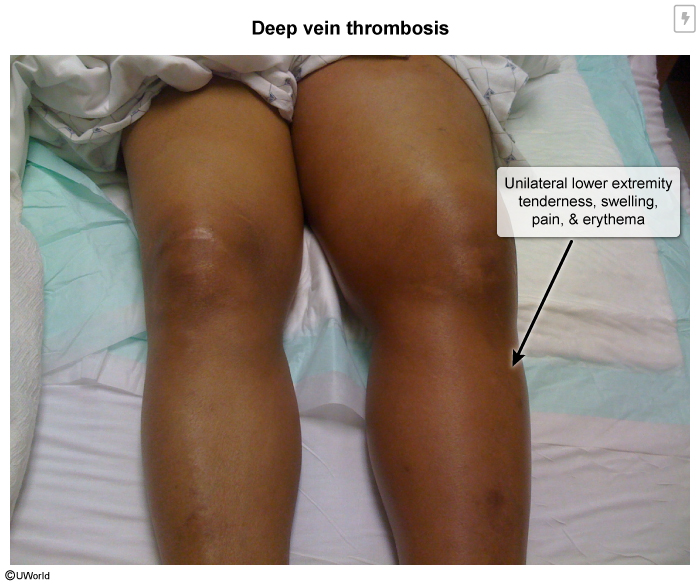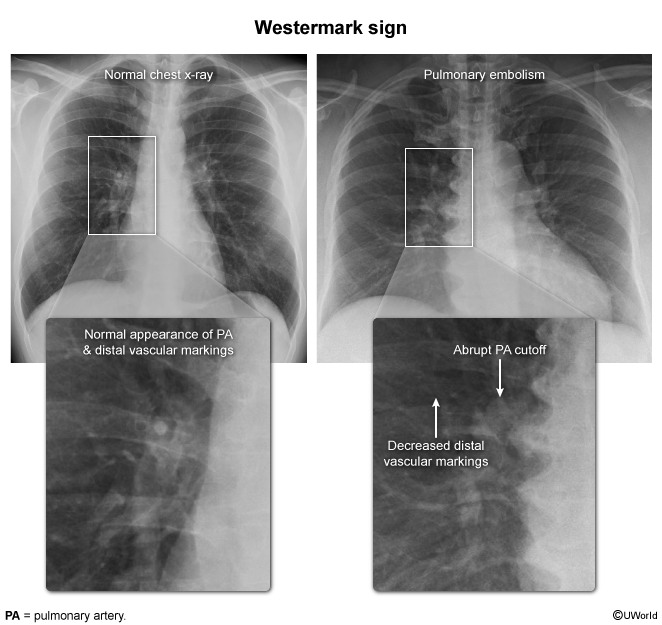Venous Thromboembolism (VTE): Deep Venous Thrombosis (DVT) And Pulmonary Embolism (PE)
Article Sections
- Introduction
- Pathogenesis and risk factors
- Clinical presentation
- Diagnostic testing
- Diagnostic strategy
- Important VTE variations
- Differential diagnosis
- Management: Guiding principles for anticoagulation
- Risk stratification of PE and management implications
- Complications of PE
- Complications of DVT
- Primary VTE prevention
- Summary
Introduction
Deep vein thrombosis (DVT) and pulmonary embolism (PE) are overlapping parts of the same disease process, venous thromboembolism (VTE). Approximately 50% of patients with DVT have concurrent PE; similarly, ~50% of patients with PE have a concurrent or residual DVT. In addition to acute morbidity and mortality (eg, right ventricular failure), DVT/PE can cause a range of chronic problems (eg, postphlebitic syndrome, pulmonary thromboembolic hypertension).
Pathogenesis and risk factors
The adjective "deep" in "deep venous thrombosis" refers to formation of clots within the internal venous system of the pelvis and legs (eg, iliac, deep femoral, popliteal, soleal, and gastrocnemius veins). Risk factors for clot formation are described in Virchow triad (Figure 1):
- Venous stasis (eg, immobility, long air travel or car rides, chronic venous insufficiency, heart failure)
Continue Learning with UWorld
Get the full Venous Thromboembolism (VTE): Deep Venous Thrombosis (DVT) And Pulmonary Embolism (PE) article plus rich visuals, real-world cases, and in-depth insights from medical experts, all available through the UWorld Medical Library.
Figures
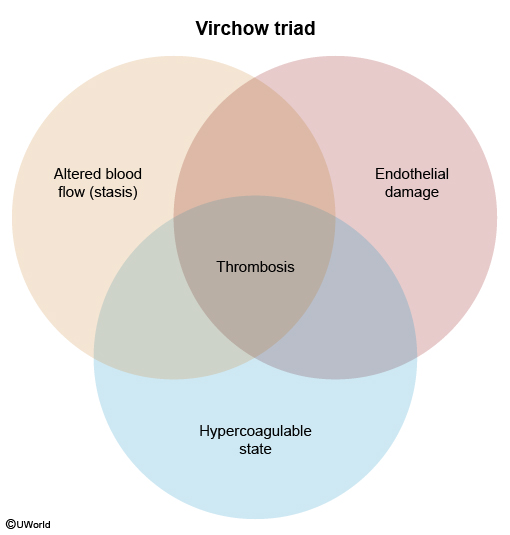
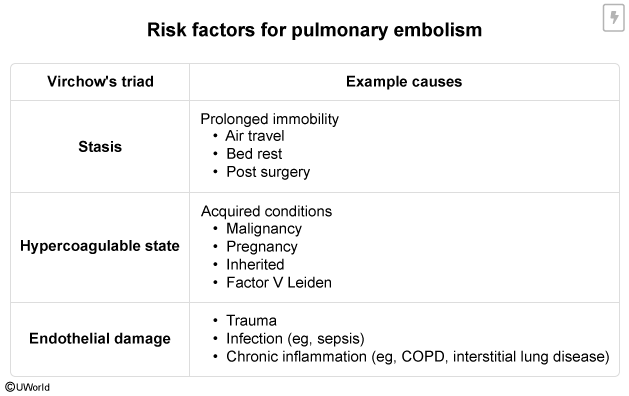
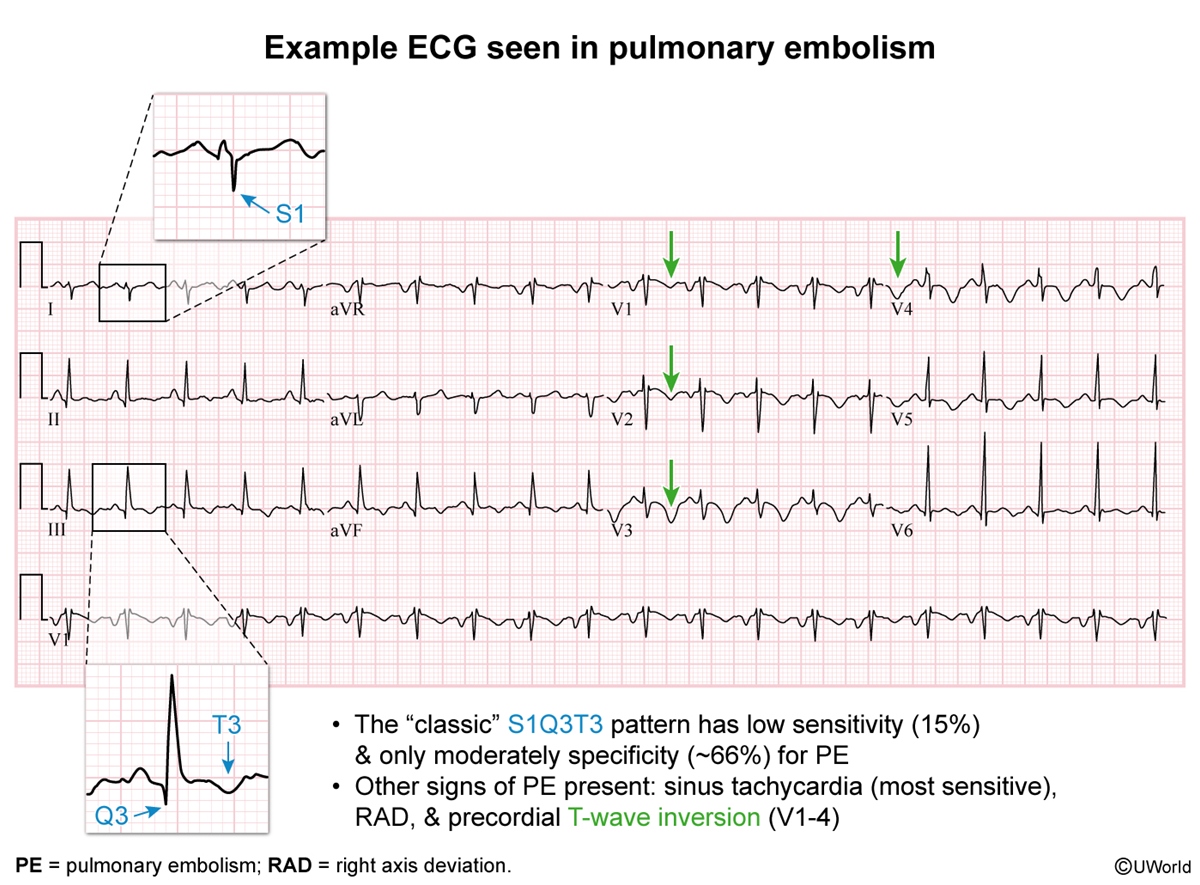
Images
